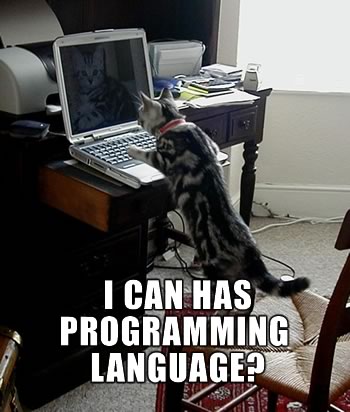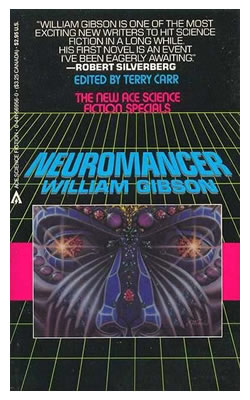I’m surprised this didn’t happen sooner, but someone — SarcasticGamer.com, the folks behind the How to Kill Your Brand video — has finally created a parody of Microsoft’s “you should be in awe, or at least think we still have some ‘game’ left” ads for Surface, their vision of “big-ass table” computing:
Tag: Funny

Although I credit David Isenberg with coming up with the concept of the Stupid Network and why it’s a good thing, it may take a guy like Mr. T. to popularize the notion that a system’s “smarts” don’t belong in its network. By way of Andy Baio’s site, Waxy.org (he found it at Flipzagging), here’s a video of Mr. T. extolling the virtues of Hitachi’s storage virtualization:
Microsoft’s Disturbing Graphic
Perhaps something is very wrong with my brain, but my first reaction to the graphic shown above — it’s for Energize IT, a free Microsoft developer event taking place in downtown Toronto on June 16th — was “Wow, bukkake. Microsoft can sure be edgy when they want to be.”
(If you’re unfamiliar with the term “bukkake”, you may wish to remain that way. Go ahead, Google it, but don’t say I didn’t warn you.)
That being said, I’ll probably attend — there’s an XNA Game Studio Express track that interests me.
johnnyOnline: “Love Two Point Oh”
Jonathan Coulton’s Code Monkey was the catchy nerd-friendly rock tune of last year. This year, the crown could very well be johnnyOnline’s Love Two Point Oh, which features lyrics like:
You’re prettier than fine CSS
You’re finer than http://del.icio.us/
as well as the “09 F9…” HD-DVD code as whispered backing vocals.
In case you haven’t seen it yet, here it is:
Cyberwar Ain’t What It Used to Be
In his “Sprawl” series of short stories and novels, William Gibson made many references to World War III’s “cyberwar” component, especially in the novel Neuromancer. Willis Corto, an important character in that novel, is the sole survivor of a particularly important but forgotten operation in WWIII called Screaming Fist, which I’ll let Wikipedia summarize:
Operation Screaming Fist was an American military operation aimed at introducing a major virus into a Russian military computer. One of the main characters of the book, Corto, took part in the operation as a colonel. The operation was significant in that it involved dropping the team assembled for it by flying them across enemy lines on light gliders, with each member plugged into the first prototype cyberdecks. Unfortunately, the operation had been grossly mismanaged and had not taken into account certain aerial defenses. As a result, Russian EMP weapons were used against the gliders shortly after they entered Russian airspace. In the ensuing chaos, Colonel Corto escaped in a Soviet helicopter gunship and was the only survivor.
While it wasn’t as visually dramatic as soldiers and hackers on ultralights descending on a Russian military computer installation in a daring night raid, the denial-of-service attack on Estonia is just as Gibsonian, judging by the way the news outlets have been tossing about terms like “cyberattack”, “first war in cyberspace”, “cyberattack” and “digital Maginot Line.
What I find really interesting is that the only futuristic thing about the whole affair are the “cyber-” terms used to describe it. The actual attack itself isn’t anywhere as exotic or future-tech-y as Neuromancer and all those other cyberpunk novels of the ’80s and ’90s made such things out to be. In fact, a lot of it seems so damned ordinary:
| Cyberpunk stories | Real world |
|---|---|
| Cyber-attacks often required physical infiltration of a heavily-guarded site by a team comprising crack paramilitary troops and “console cowboys”. | The cyber-attack didn’t require anyone to physically go anywhere; it was all done online. |
| Cyber-attacks often required specialized viral software (“icebreakers” in Gibson’s novels, where “ICE” stood for “Intrusion Countermeasures Electronics”) that had to be written by AIs and were available only to the military or from specialized black market dealers like The Finn. | Cyber-attacks do make use of specialized viral software, but they’re written by humans — often teenagers with plenty of spare time — and are relatively easy to obtain if you hang around the right online circles (or wrong ones, depending on your point of view). |
Cyber-attacks were typically pulled off using very specialized hardware built by hardware gurus. Here’s a line from hardware specialist Automatic Jack from the short story Burning Chrome:
|
This cyber-attack was carried out by a botnet, which is essentially a lot of ordinary home computers — stock machines and “commodity hardware” — whose spare cycles are being harnessed by a virus that probably found its way in there via spam, malware site or some other rather ordinary vector. |
| Cyber-attackers interfaced with their machines by “jacking in”; that is, linking themselves to their machines through electrodes, through which they’d operate in a virtual reality-like environment.
If they ran into “Black Ice”, a deadly form of anti-malware countermeasures, their nervous systems would get fried. |
Cyber-attackers interfaced with their machines by “logging in”; that is, linking themselves to their machines through a keyboard, mouse and monitor, through which they’d operate in a command-line environment.
If they typed too long without a break, they’d get carpal tunnel syndrome and their wrists would get fried. |
| Cyber-attack targets were fancy-pants specialized computer installations accessible to few, such as military supercompters in Neuromancer’s backstory or the AI complex in its climax. | The cyber-attack target was the Estonian internet, which people used for everyday activities, from banking to email to looking at pictures of other people’s cats with funny captions. |
| Fashion: Many hackers wore leather, black jeans and mirrored shades. | Hey, this is also true in real life! Score one for Gibson! |

The moment Anil Dash published his now-famous blog entry on the grammar used by lolcats, Cats Can Has Grammar, the door to studies that were equal parts silly and serious was opened. Not to be content with mere lexical and semiotic analysis of lolcats, some folks have taken it to the next level: the LOLCODE programming language.
LOLCODE is your standard Algol-style programming language (Algol is the grandfather of just about every popular current programming language) married to the lolcat captioning style — that is, ALL CAPS and I CAN HAS SILLY CAT GRAMMER AND SPELING KTHXBYE.
Here’s HAI WORLD, the LOLCODE version of “Hello, World!”:
HAI CAN HAS STDIO? VISIBLE "HAI WORLD!" KTHXBYE
Here’s something that outputs the numbers 1 through 10, a classic beginner’s exercise:
HAI CAN HAS STDIO? I HAS A VAR IM IN YR LOOP UP VAR!!1 VISIBLE VAR IZ VAR BIGGER THAN 10? KTHXBYE IM OUTTA YR LOOP KTHXBYE
And finally, here’s a program to print the contents of a specified file:
HAI CAN HAS STDIO? PLZ OPEN FILE "LOLCATS.TXT"? AWSUM THX VISIBLE FILE O NOES INVISIBLE "ERROR!" KTHXBYE
If someone’s working on an IDE for this language, I have very important stylistic advice: it should make heavy use of the Impact font, just like all those lolcat captions. Bonus points if it’s Impact with a white fill and black stroke!
The New York Times article The High Price of Creating Free Ads covers Heinz’s contest in which its customers are challenged to create their own television advertisement for Heinz Ketchup. The subtext of the article seems to be this: Leave this kind of work to the professionals.
Note that while advertising execs and a couple of contest entrants are interviewed in the article, there isn’t a single quote from “the audience”. Perhaps the constraints of a press deadline would’ve made it too hard to gather some “average person” reviews of some submitted ads, but it would’ve been informative. Remember that the original ads for HeadOn (“HeadOn! Apply directly to the forehead!”) were created by professionals and apparently passed focus group muster.
In my opinion, at least one of the customer-submitted ads is quite good. I laughed out loud when it hit the punchline, and I thought it would work perfectly in “edgy” time slots, such as Cartoon Network’s Adult Swim (or in Canada, Teletoon’s The Detour):


